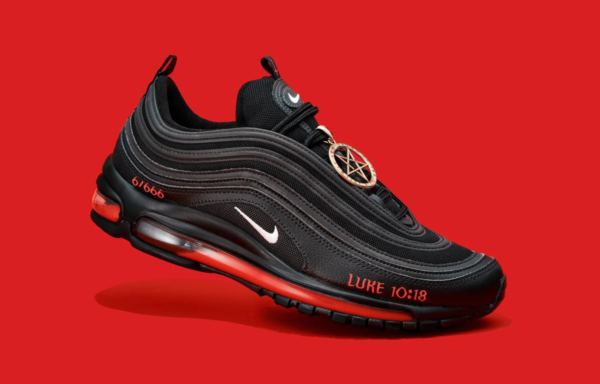

On March 29, 2021, the art collective MSCHF announced the sale of 666 pairs of “Satan Shoes”, which were promoted by rapper Lil Nas X. The Satan Shoes, which were actually customized black-and-red Nike Air Max 97 sneakers, contained a bronze pentagram and red ink and a drop of human blood in the shoes’ midsoles. The sneakers sold out in less than one minute.
Nike immediately sued MSCHF in a New York district court for, among other things, trademark infringement and trademark dilution.
Nike’s lawsuit has given me a great opportunity to discuss trademark rights, infringement and enforcement.
What is a trademark?
A trademark is anything (a word, slogan, logo, sound, or even color) that distinguishes the goods or services of one party from those of another. A good example of a well-known trademark is the Nike swoosh logo itself. It’s used on sneakers and sports apparel. Also, whenever we see a bitten apple on laptops or phones, we know we are looking at Apple products. It’s a design that distinguishes Apple from its competitors, such as Dell and Samsung. Essentially, trademarks are source identifiers.
What are some of the rights one gets with U.S. federal trademark registration?
With registration, a trademark owner gets the exclusive right to use their trademark nationwide in association with the goods/services listed in their registration. If someone else wants to use the trademark, they must get the owner’s permission i.e. a license.
Below are some other rights one receives with federal trademark registration:
Nike has owned the Swoosh logo in association with footwear since the 1970s. Thus, they have the trademark rights listed above and the responsibility to enforce those rights.
What is trademark infringement?
When someone who does not own the trademark uses the trademark in association with similar goods or services, trademark infringement has occurred.
What is likelihood of confusion?
One of the most important factors used to determine whether trademark infringement has occurred is likelihood of confusion. This is the likelihood that consumers are going to be confused as to the source of the goods.
The likelihood of confusion factor itself has eight factors: strength of the mark, proximity of the goods/services, similarity of the marks, evidence of actual confusion, marketing channels used, type of goods and the degree of care likely to be exercised by the purchaser, defendant’s intent in selecting the mark, and likelihood of expansion of the product lines.
What is trademark dilution?
Under the Lanham Act (the federal law that governs trademarks), there are two ways a trademark could be diluted.
First, there is dilution by blurring. This is where the association that arises from the similarity of a famous trademark and potentially infringing trademark impairs the distinctiveness of the famous mark. Blurring involves the “whittling away” of the selling power and strength of the famous mark.
Second, there is dilution by tarnishment. This is where the association that arises from the similarity of a famous trademark and potentially infringing trademark harms the reputation of the famous mark.
How does trademark infringement and trademark dilution apply to this MSCHF/Nike case?
While trademark owners usually first send a cease and desist letter to potential trademark infringers, they can also immediately sue the other party in court. Nike took the latter approach.
Regarding trademark infringement, the factors weighed heavily in a finding of a likelihood of confusion in favor of Nike. For example, there was actual confusion because consumers complained to Nike about their endorsement of the Satan Shoes. Furthermore, because Nike’s 97 Max shoe was used to create the Satan Shoes, there is great proximity between MSCHF and Nike’s goods and similarity of the marks.
Regarding trademark dilution, in its complaint in federal court, Nike provided numerous examples of customers saying that they’d never purchase Nike shoes again because they believed the Satan Shoes came from Nike. Their reputation was harmed because of the Satan Shoes.
Was this suit resolved?
Yes. About two weeks after Nike filed suit, a settlement was reached between them and MSCHF. Under the settlement terms, MSCHF will offer refunds to anyone who wants to return the sneakers and engage in a voluntary buyback of sneakers in circulation.
How do I find out more about trademark law?
You can click the Trademark tag on the right to read more blog posts. You can also contact us here.


